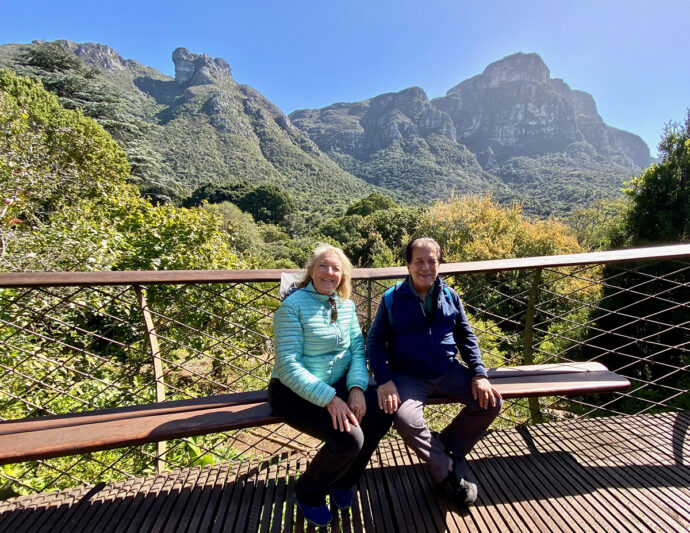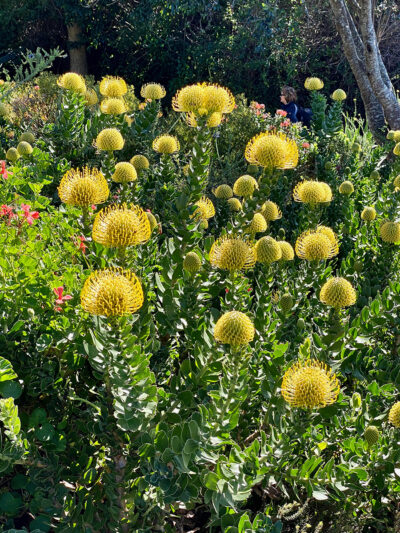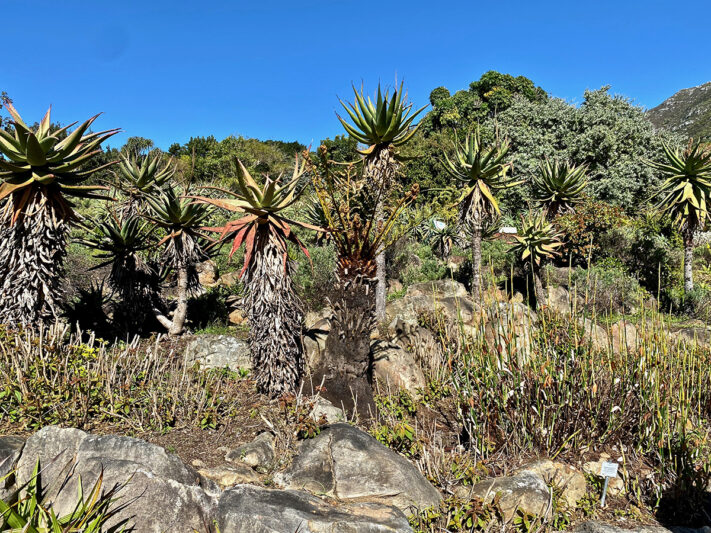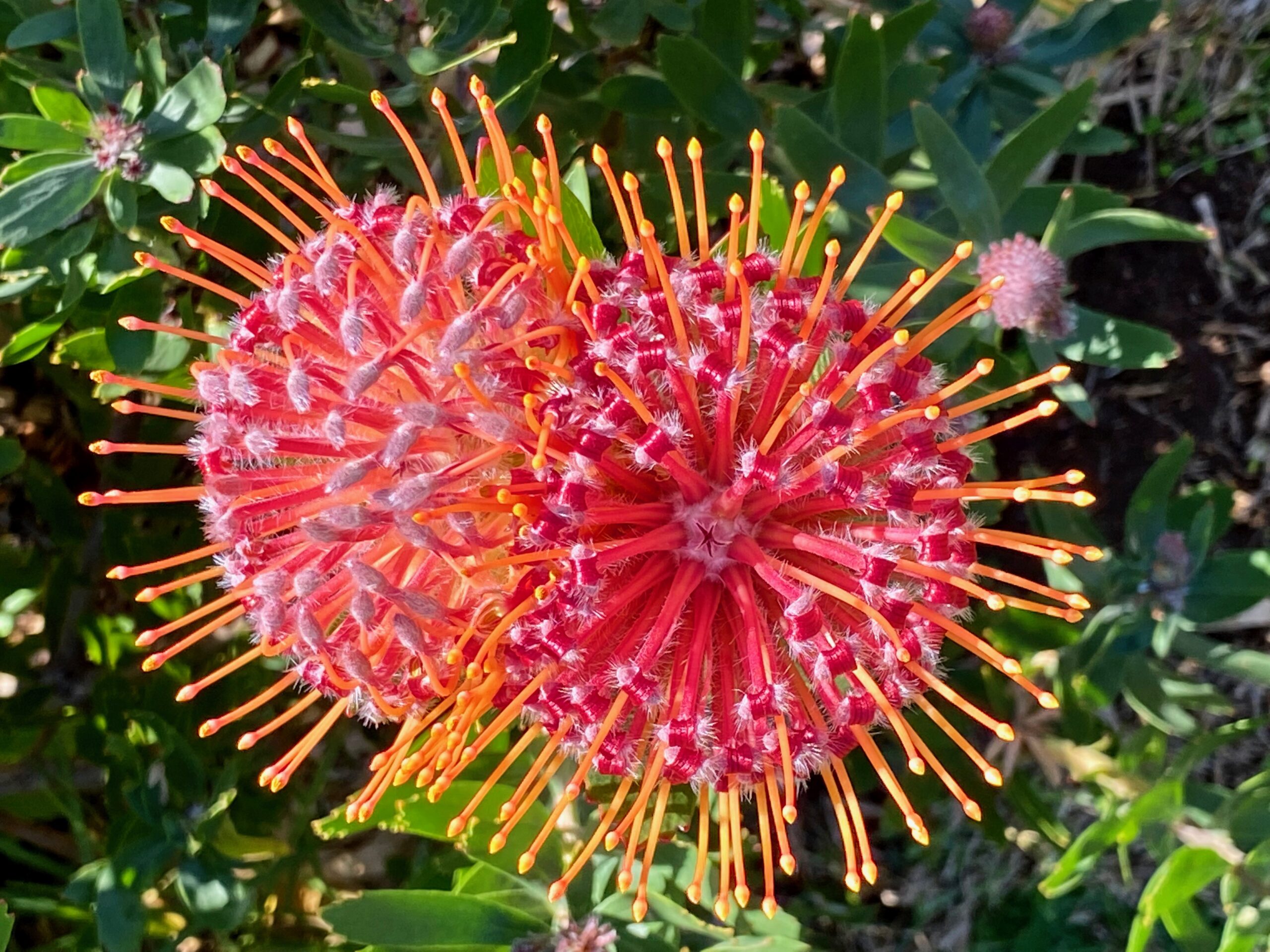Since a young child I’ve been a traveler, and one of my favorite places to visit are gardens. There are many incredible gardens that people flock to from around the world including the Royal Botanic Gardens, Kew, near London in the United Kingdom; Buchart Gardens in Brentwood Bay, British Columbia, Canada, located near Victoria on Vancouver Island; Monet’s Gardens in Giverny, France; Koishikawa Korakuen Gardens in Tokyo; and Limahuli Garden and Preserve in Kauai, Hawaii, United States, all of which I’ve been fortunate to visit.
Among the other fantastic gardens in the world, I excitedly journeyed through the Kirstenbosch National Botanical Garden in Cape Town, South Africa, snuggled against Table Mountain. I chose South Africa because I grew up one block from the Detroit Zoo. I remember many a night when I would lie in bed listening to lions roar and elephants trumpet. Since then, I’ve always wanted to see such life in the wild. When finally I got my chance to travel to South Africa, I was fortunate to include another world fabulous botanical garden.

Tierras in Kirstenbosch canopy
Kirstenbosch is dedicated to investigating, classifying, and documenting South Africa’s biota. This garden is unique to the others in that it focuses only on the 9,000 indigenous Cape species in the three groups of the fynbos ecoregion: protea flowers, erica heathers, and restios grasses. Of the world’s six floral kingdoms, this is the smallest but richest per unit of area.
And indeed it was. The gardens are divided into many different sections, almost like rooms, including fragrant plants, “useful” plants, endangered plants, thirst-quenching plants, “private” plants (i.e. for sexual organs), the oldest and original section of the gardens, and of course protea, erica and restios.

Yellow protea
I was especially intrigued with the protea (sugarbush) plants. About 92% of protea grow only in the Cape Floristic region of South Africa, although they now also grow in Mediterranean and subtropical climates. And yet, I had never seen them in person. I was fortunate to see them the first day of spring when they flower, although some protea don’t flower at all.
These are quite amazing plants. Stroking the petals of some protea flowers felt like touching plastic, and yet they are very much alive. As they come in quite a variety of forms and multiple colors, it’s probable Carl Linneaus named this genus for the Greek god, Proteus, who could change his form at will. Proteas make long-lasting cut flowers and beautiful arrangements.

Aloe trees
I also loved the canopy walk where I could peer high into the treetops at tall aloe trees along with viewing Cape Town alongside the Atlantic Ocean. It was the first time I had seen an aloe tree, only being familiar with the common aloe vera plant I always keep in my kitchen. Indeed, I learned there are about 400 species in the aloe genus and several of them are represented in the Kirstenbosch Gardens.
The erica heather in the cape area have tiny leaves and smaller flowers, and yet are quite beautiful. And of course the restios grasses abound throughout the garden. Although I unfortunately didn’t get to see the rooibos plant, I did drink my way through South Africa on this delicious tea, found and offered everywhere.
If you ever go to South Africa, be sure to visit the incredible Kirstenbosch National Botanical Gardens. You will be offered beautiful views, intriguing plants, and relaxing walks through multiple garden areas. And of course, a delicious lunch with rooibos tea is available as well!

